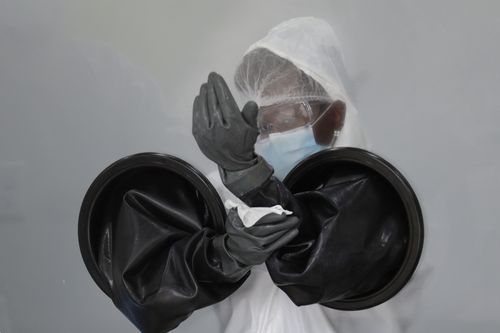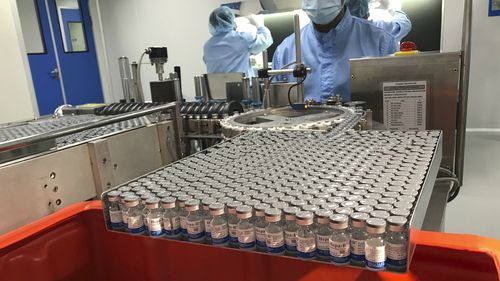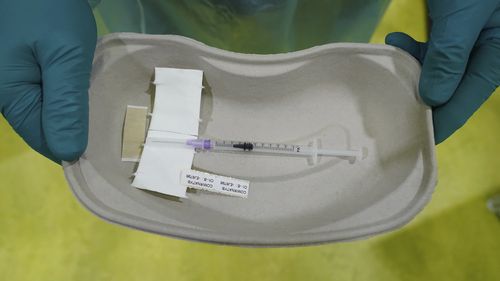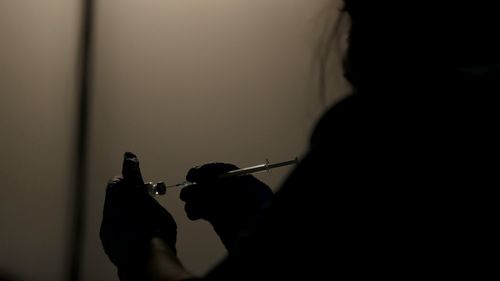Aside from efficacy numbers, the Chinese manufacturer has released very little public data about its two vaccines – one developed by its Beijing Institute of Biological Products and the other by the Wuhan Institute of Biological Products.

The Beijing shot is one the WHO advisory group considered for the emergency use listing.
The Sinopharm vaccine will join ones made by Pfizer-BioNTech, Johnson & Johnson, Moderna, AstraZeneca, and a version of the AstraZeneca vaccine made by the Serum Institute of India, in receiving the coveted authorisation from the UN health agency.
“This expands the list of vaccines that COVAX can buy and gives countries confidence to expedite their own regulatory approval and to import and administer a vaccine,” Tedros said at a Geneva news conference.

Previously, a separate group advising WHO on vaccines said it was “very confident” the Sinopharm vaccine protects people ages 18-59. The group said it had a “low level of confidence” in the vaccine’s efficacy for people 60 and over. Its members said they had “very low confidence” in the available data about serious side effects in that age group.
Sinopharm hasn’t published its late-stage test results in scientific journals, so the WHO requested a breakdown of its data, which come mostly from the United Arab Emirates. A summary posted online by WHO suggests the vaccine is about 78 per cent effective, with the caveat that all but a few hundred of the study volunteers were younger than 60.
Gavi, the Vaccine Alliance, which co-runs COVAX, welcomed the announcement.
“This means the world has yet another safe and effective tool in the fight against this pandemic,” the alliance said. The public-private partnership said it was in discussions with several manufacturers, including Sinopharm, “to expand and diversify the portfolio further and secure access to additional doses” for countries in the COVAX program.

COVAX aims to send vaccines for free to 92 lower-income countries and to help another 99 countries and territories procure them. It was not immediately clear when the Chinese vaccine might be made available to the COVAX portfolio
The program, which has already distributed over 54 million doses of COVID-19 vaccines but faces limited supplies from Western countries and India, has been working hard to strike deals as part of its goal to procure 2 billion doses by the end of the year.
Suerie Moon, co-director of the Global Health Program at Geneva’s Graduate Institute, said the WHO decision on the Sinopharm COVID-19 vaccine and other Chinese vaccines will “carry a lot of weight” because of limited information publicly available about them.
“The decision is also sure to be scrutinised all around for any whiff of political bias, and no doubt the committee members were very well aware of this,” she said, noting that the decision could also be a boon for developing countries in need of coronavirus vaccines.
“If there is a greenlight, these vaccines could boost the thin stream of supplies that has been channeled through COVAX to date,” she said, as the program has been hit hard by export bans limiting vaccine supply from India. India has kept those doses amid a surge of cases at home.

Moon also said if Chinese suppliers start channeling large volumes, “this would signal a step-change in their participation in global vaccine markets.” Before the pandemic, India was a well-integrated player in the global health vaccine supply system, but China was not, she said.
WHO’s decision on Sinopharm, months in the making, was particularly complex because the vaccine has not faced the high-level scrutiny of a rigorous medicines regulator like those in Europe and the US.
The WHO panel relied frequently on those Western agencies’ findings when it came to vaccines that it has already approved emergency use.
Many officials in countries without such regulatory structures rely on WHO’s emergency use listings to authorise vaccine rollouts for their populations.

Hundreds of millions of Chinese vaccines have already been delivered to dozens of countries around the world through bilateral deals as many scrambled to secure supplies after rich countries had reserved the vast majority of supplies from Western pharmaceutical makers.
While China has five shots in use, the majority of its exports abroad come from two companies: Sinopharm and Sinovac. A decision on Sinovac is expected next week, WHO said.
The Chinese vaccines are “inactivated” vaccines, made with killed coronavirus. Most other COVID-19 vaccines being used around the world, particularly in the West, are made with newer technologies that instead target the “spike” protein that coats the surface of the coronavirus.
Sinopharm said last month that over 100 million doses of its two vaccines have been used across the world.

Sinovac, by comparison, has shared relatively more data. Last month, a study published by a team of scientists in Brazil confirmed a previously reported efficacy rate of over 50 per cent. A real-world study in Chile also last month found an efficacy rate of 67 per cent.
This content first appear on 9news
